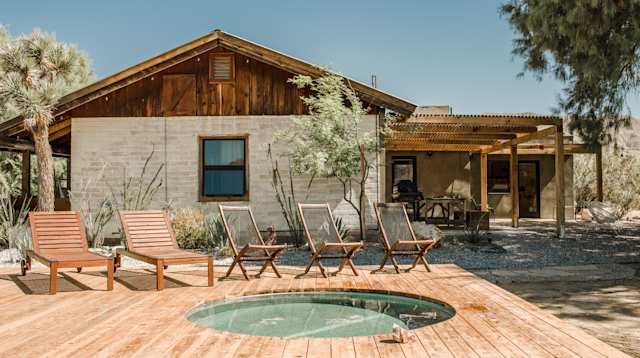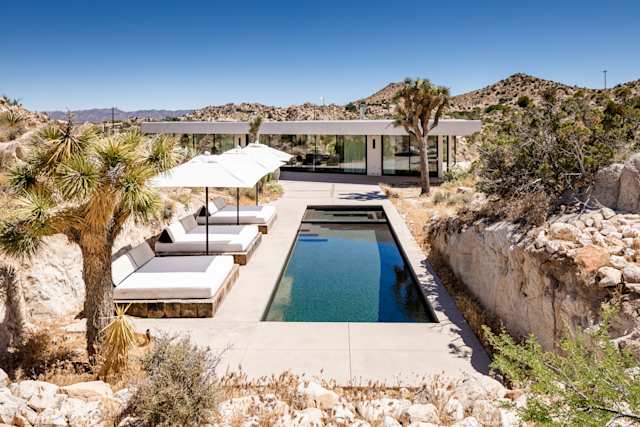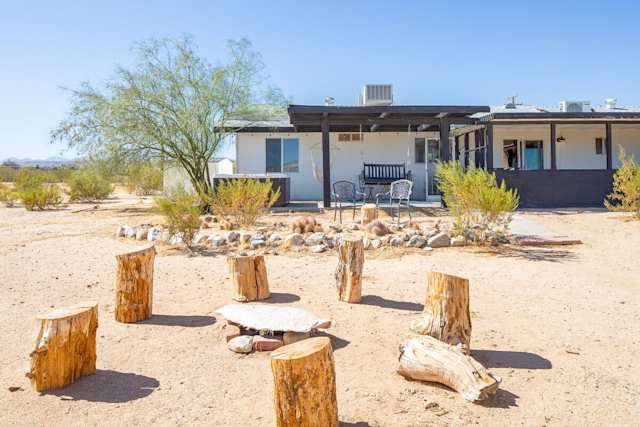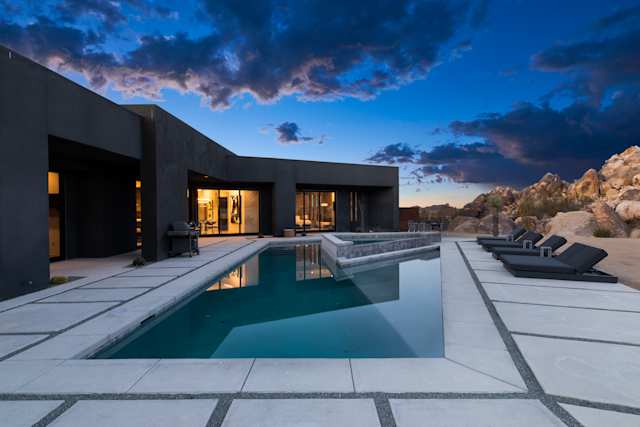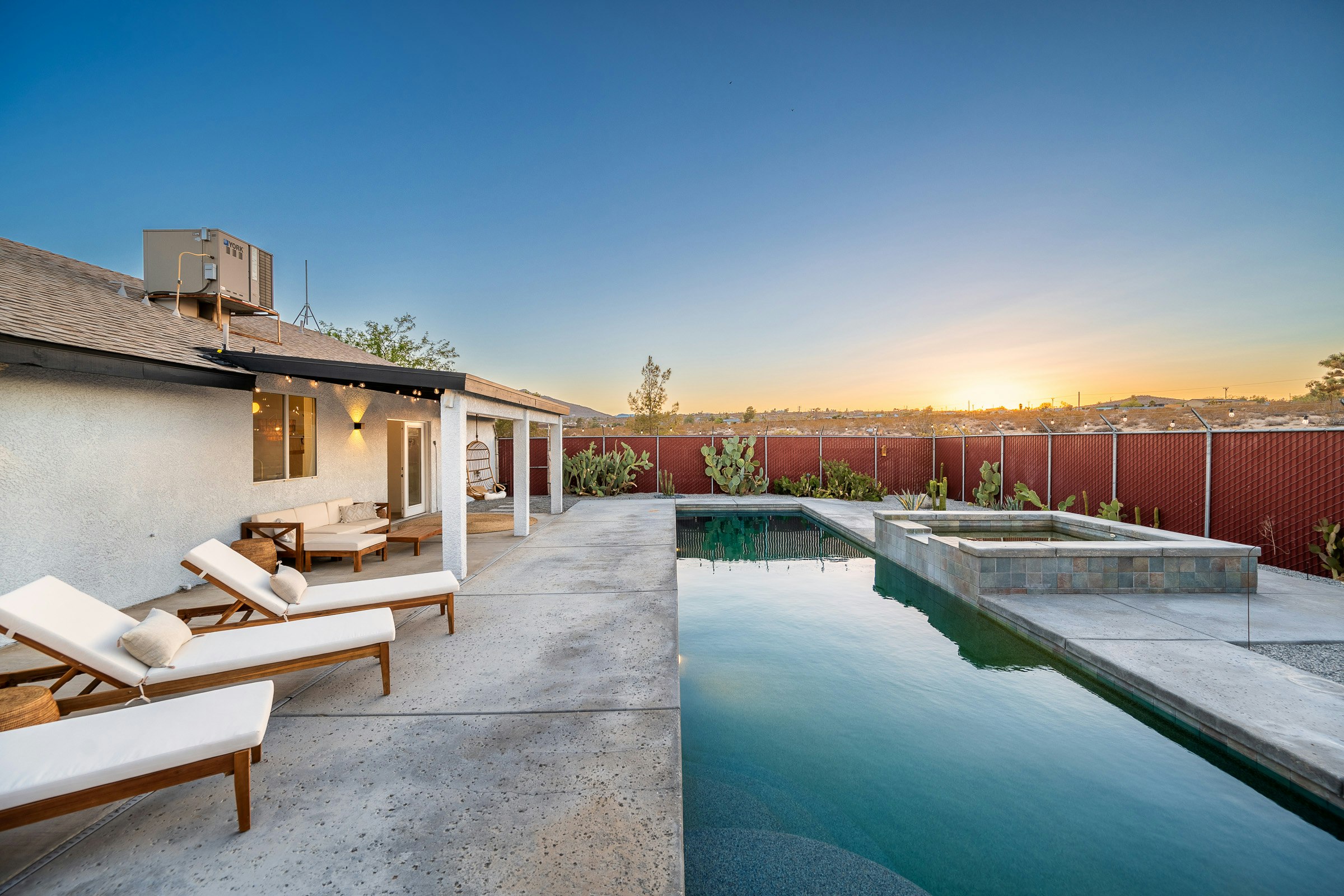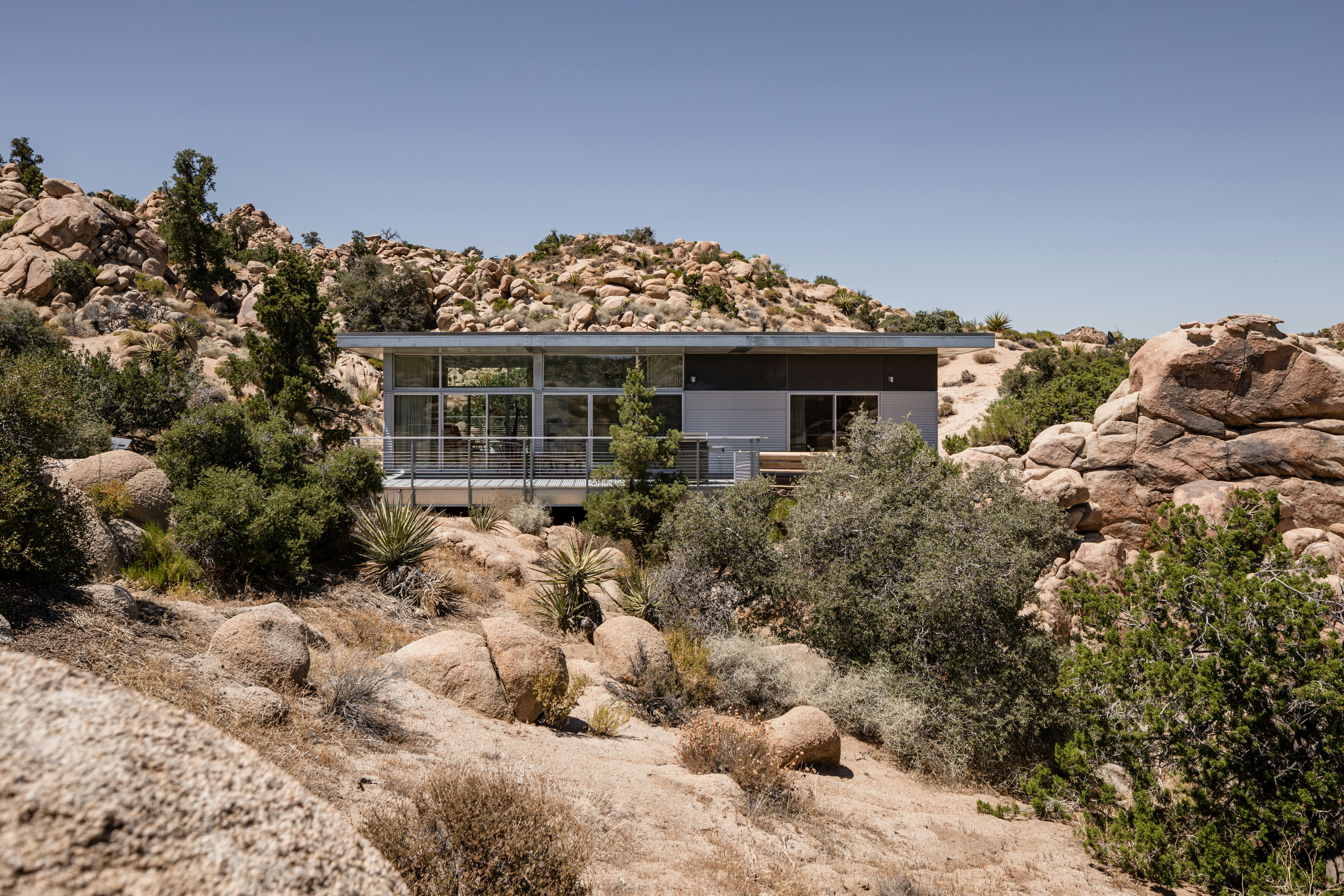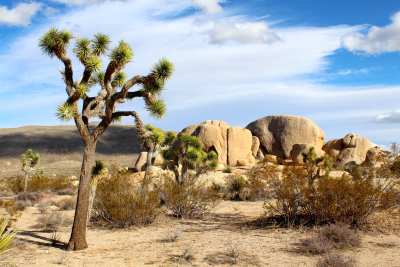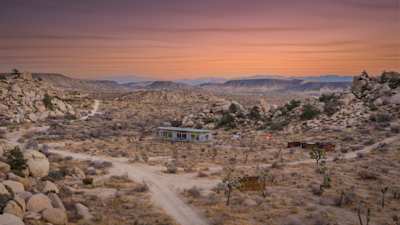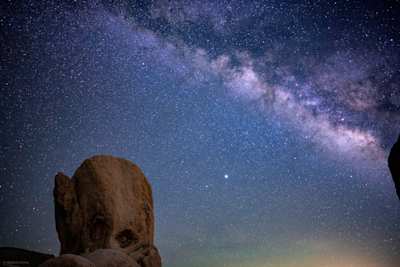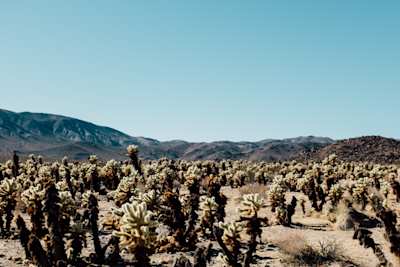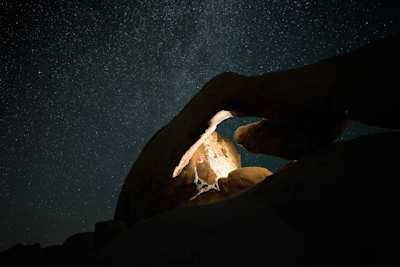The Best Time to Visit Joshua Tree
Spring, summer, autumn or winter: our Plum Guide homes make this a top destination year-round.
~
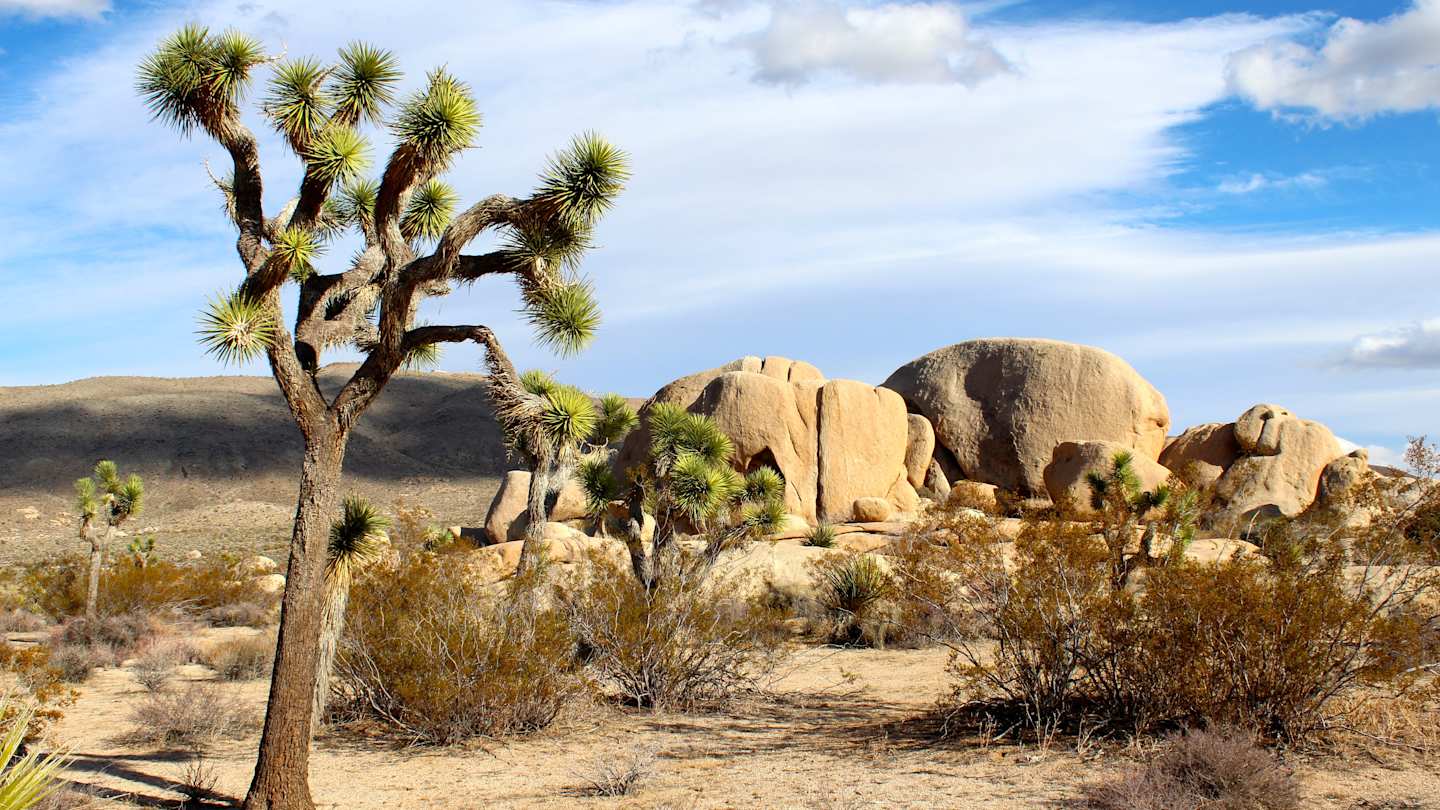
These otherworldly trees, their branches creeping towards the sky as though offering up tufts of green hair clenched in their twig-like hands, make the Joshua Tree National Park among the most idiosyncratic and exceptional places on the planet. And you, dear Plum Guide reader, are one of the most exceptional people on the planet, so it makes for an ideal match. Bring your binoculars to spot the birds high above, and look to the desert floor for the scuttling of wildlife, with lizards searching for juicy insects. You can do a little better though, and choose from one of the gourmet restaurants in the area and in the nearby upscale resort town, Palm Springs. So when's best time to visit Joshua Tree? This being California, the desert has a gorgeous climate year-round, although it can get pretty frosty on winter nights and somewhat scorching on summer afternoons. Here’s what that means for your holiday, and when you should take it.
Spring
We’ll start with spring, generally considered the best time to visit Joshua Tree National Park. Temperatures reach up to 29C (85F) in the afternoon, so hikes can get a little sweaty, before it cools down dramatically come evening. Get up before the sun does (it’s tough, we know, but just do it – holidays aren’t for relaxing, they are hard work), and see if you can spot some coyotes. It does get warm fairly quickly, so maybe it’s best to take on the Barker Dam Nature Trail, which runs for just 1.3 miles (2.1 kilometres) in a loop, and has its own restrooms. Spot more of those coyotes as well as Bighorn sheep on this route. The Hidden Valley Trail is another fairly easy 1-mile (1.6-kilometre) loop with stunning views of the valley walls. Spring is the best time to embark upon this path, as it is the time when the wildflowers are at their most beautiful.
Summer
Ok, it’s boiling. What were you thinking? Just kidding – the night time temperatures here are absolutely perfect, dropping down to 24C (75F) after sunset. Perfect for a nice dinner outside with your family at one of our homes with a terrace and pool. You could also head to one of the region's upmarket restaurants, such as La Copine or Le Vallauris. It's all un peu French, isn't it? It’s a bit warm for hiking in the park, at least during the day. But if you can take the heat, you’ll have much of this beautiful park to yourself. What many people don’t realise is that summer is the optimal time for stargazing (and we don’t mean the Hollywood kind). In August, you might even be lucky enough to catch premium seats (well, anywhere on the floor will do) for the Perseid Meteor Shower.
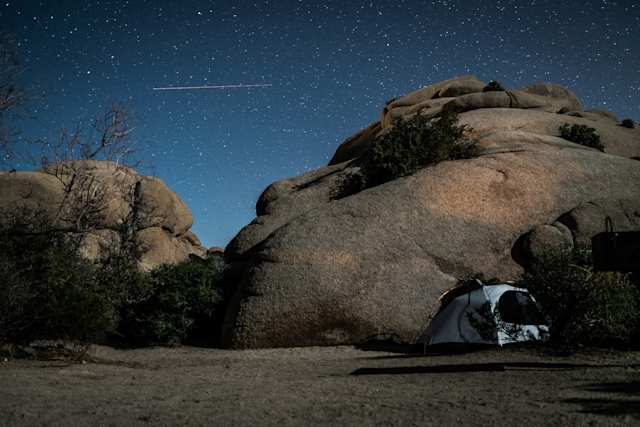
Stargazing in Joshua Tree, California
Autumn
Phew, things were getting a bit hot there... luckily, fall is here to take the edge off. Like spring, autumn is widely considered the best time to visit Joshua Tree National Park. Temperatures are bearable, although you should probably bring a fair bit of water, a hat and some sun cream on your trek. Bring your camera and become the best photographer in the world with the golden light of fall sprinkling down the reddy-brown rocks of valley walls and cliffs. Stay for the Joshua Tree Music Festival and the Bhakti Festival. Take on some of the best trails, from the Cholla Cactus Garden and the Cottonwood Spring to the Discovery Trail and the Hidden Valley.
Winter
‘Now is the winter of our discontent.’ Shakespeare obviously hadn’t visited the Joshua Tree National Park in winter, the mardy Bard. Things cool down big time in winter, and the park becomes as spacious and unspoiled as it is in summer. It is one of the best times to visit Joshua Tree for rock climbing, because you can actually touch the rock face without burning your fingers off. It also makes for a great alternative to the Yosemite National Park a little further north, which is too snowy for rock climbing in winter. That said, with luck, you might witness a snowy flurry or two during your winter stay. With the cooler winter temperatures, maybe it is time to brave yourself for some of the bigger exertions (or just tell your family back home that you did it). The Ryan Mountain is a moderate path that involves a 1,000-foot (300-metre) elevation gain. It’ll be worth it when you reach the top for the spectacular views of the park.
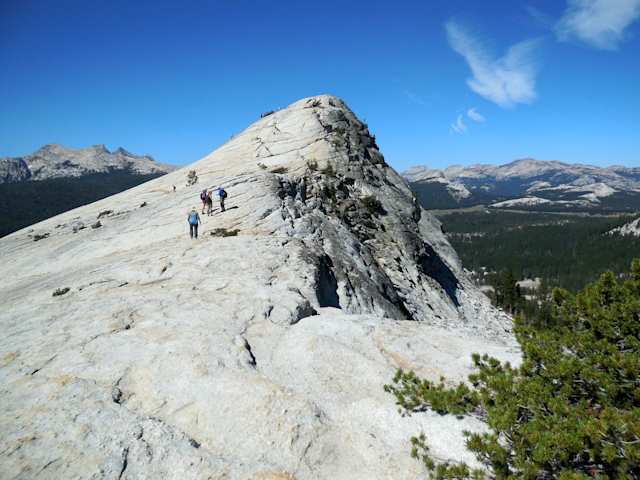
Yosemite National Park, USA
